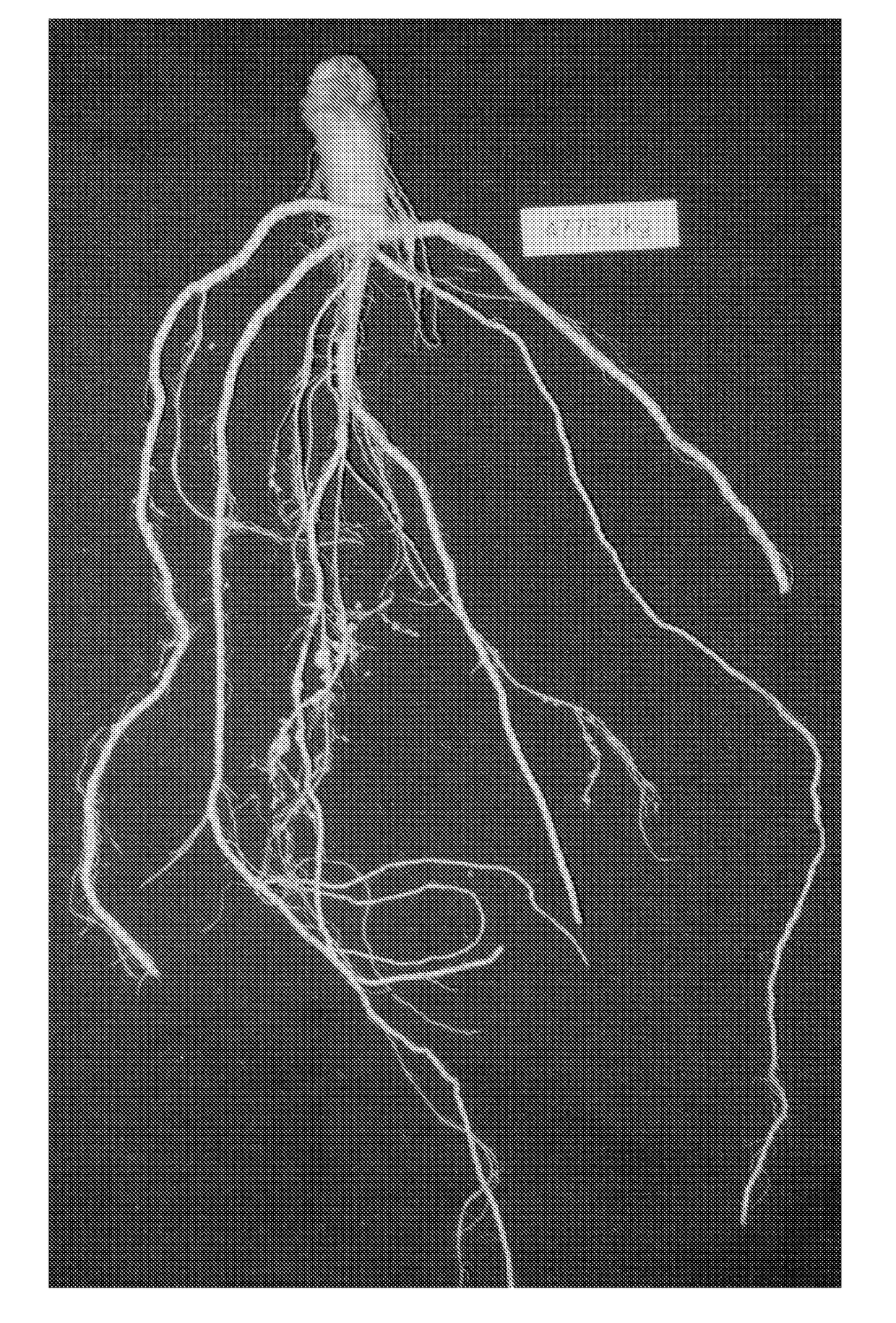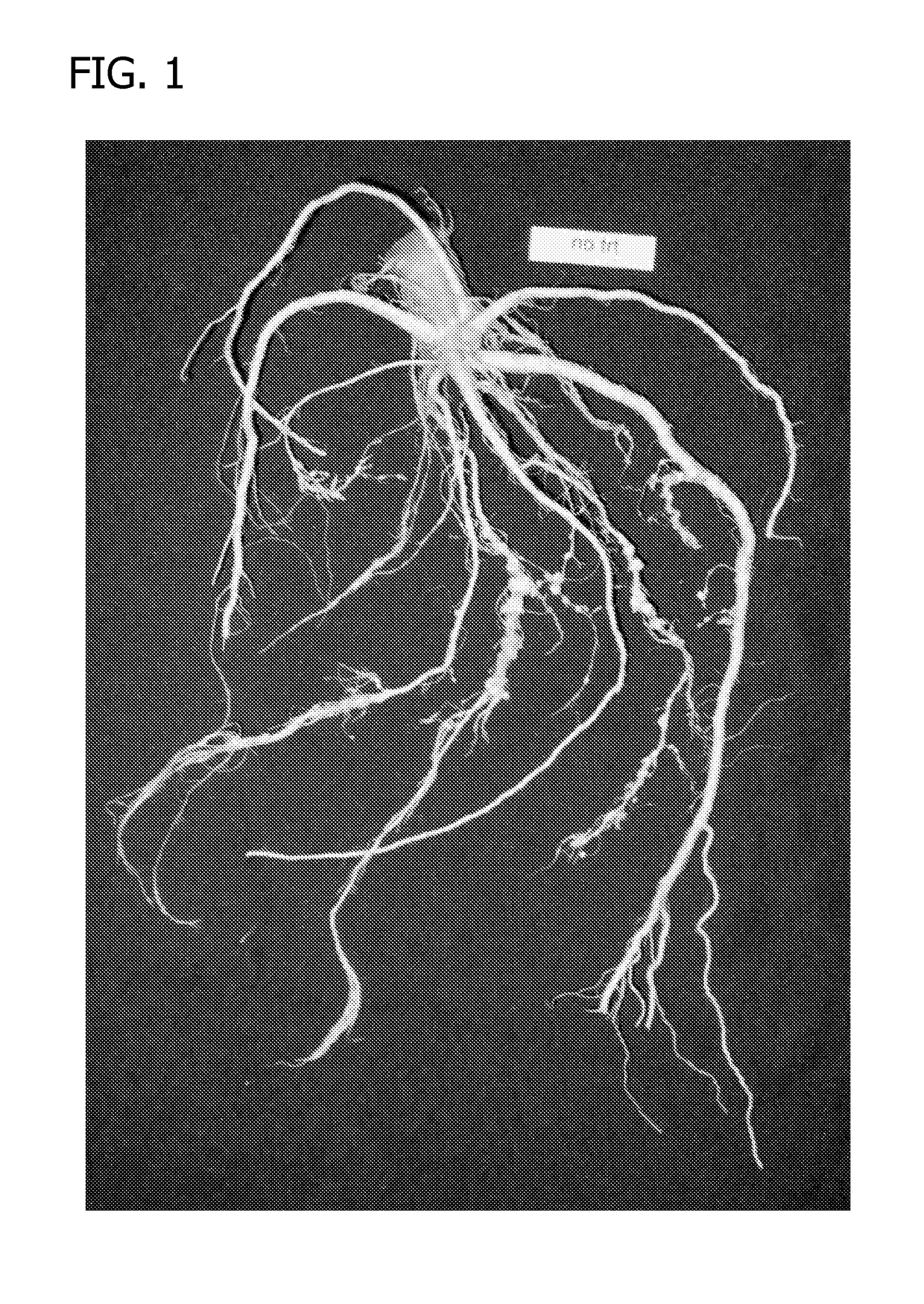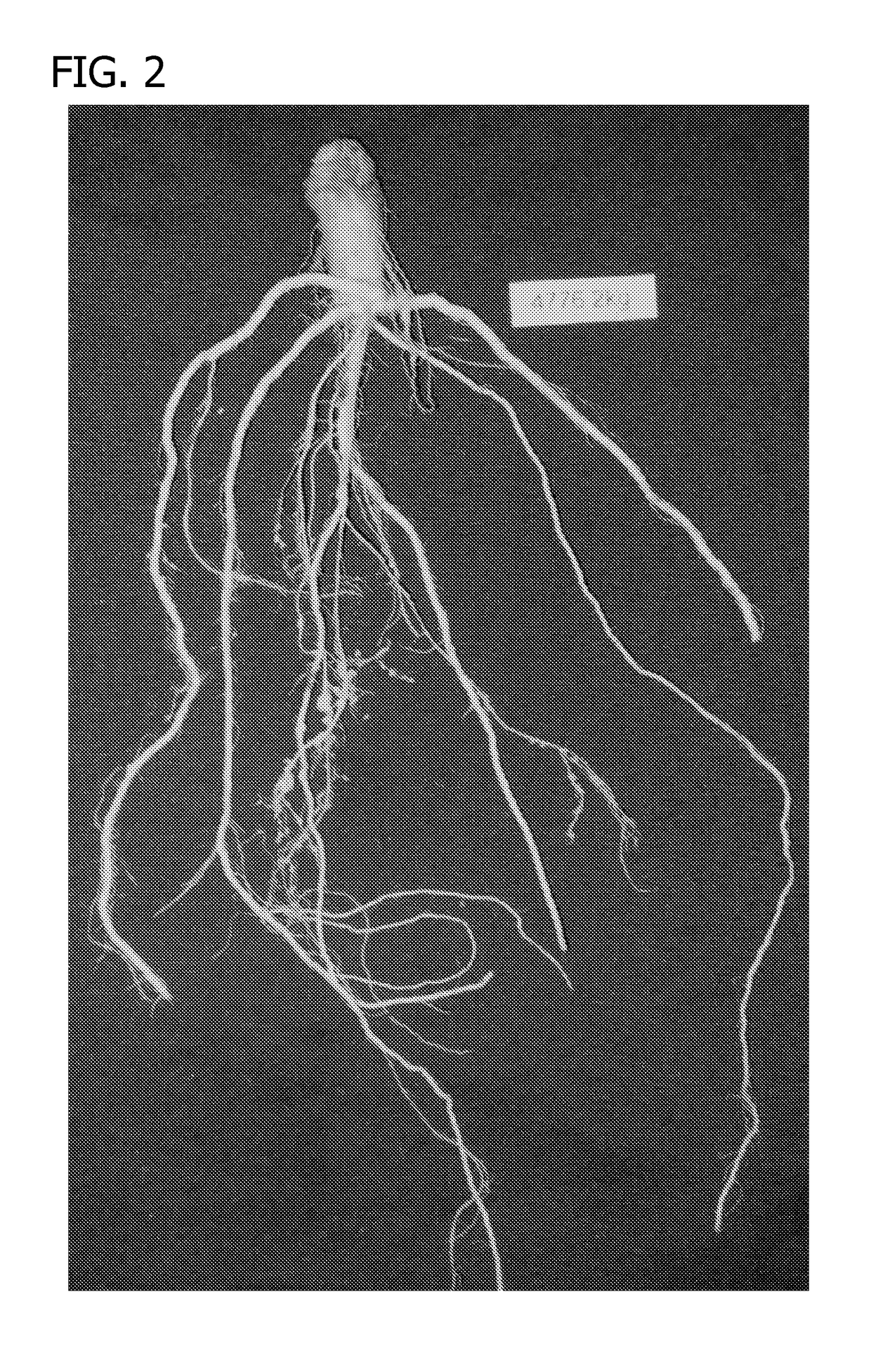Compositions and methods for improving agronomic characteristics of plants
a technology of agronomic characteristics and compositions, applied in the field of compositions and methods for improving agronomic characteristics of plants, can solve the problems of affecting the strawberry and other commodity crop industries, affecting the viability of nematode parasites, and little success in finding safe and effective replacements of toxic but efficacious conventional nematode parasites, etc., to reduce the viability, growth or fecundity of a nemato
- Summary
- Abstract
- Description
- Claims
- Application Information
AI Technical Summary
Benefits of technology
Problems solved by technology
Method used
Image
Examples
example 2
reenhouse Testing Protocols
[0296]Soybean Planting and Growth:
[0297]Soybeans seeds are planted in 100% sand in two inch square plastic pots. Chemical treatment is done when the soybeans show the first trifoliate beginning to emerge about 10 to 12 days after planting. At least four hours after chemical application the nematode soybean cyst nematode (SCN) eggs are applied and 28 days after the egg inoculation the test is harvested.
[0298]Cucumber Planting and Growth
[0299]Cucumber seeds are planted in a sandy soil mixture in two inch square plastic pots. When the cotyledons are fully opened and just as the first leaf begins to emerge, usually 7 days after planting, chemistry for the 7 day treatment is applied. One week later the chemistry for the 0 day treatment is applied. Separate plants are used for each application. The plants are generally in the 1-2 leaf stage now. At least four hours after the chemistry application the pots are inoculated with root knot nematode (RKN) eggs. Plants...
example 5
te Toxicity Testing
[0314]Acute oral toxicity testing was performed in mice in accordance with test method P203.UDP, as administered by Eurofins / Product Safety Laboratories (Dayton, New Jersey). CD-1 / Swiss derived albino mice were obtained and group housed in suspended solid bottom caging. The mice were fed rodent chow and filtered tap water was supplied ad libitum. Following acclimation to the laboratory setting, a group of animals was fasted overnight by removing food from the cages. After the fasting period, three female mice were selected based on vitality and initial body weights. The individual compound doses were calculated from these body weights.
[0315]The test substance was prepared as a 1% (50 mg / kg) or 5% (500 mg / kg) weight to weight (w / w) mixture in a 0.5% w / w solution of carboxymethylcellulose (CMC) in distilled water. A tissue homogenizer was used to create a homogeneous mixture. A dose of 50 or 500 mg / kg was administered to three healthy mice per dose level by oral int...
example 6
[0330]Pre-Plant Incorporated Test (PPI)
[0331]The PPI test examines the effect of pre-incorporation of compounds in soil and longer aging to simulate in furrow methods of nematicide application in the field. The PPI test exposes compounds to a higher volume of soil and drying which can result in more severe soil binding. Compounds are also aged for longer periods which can lead to more extensive biotic and abiotic degradation further limiting activity.
[0332]The chemically treated soil (sandy soil mix) for all treatment days (e.g., 7 days, 14 days, 21 days) treatments is potted into their appropriate pots. On the same day the 7 day treatment pots are seeded. One week later eggs are applied and 14 days after egg application the test is harvested. The 14 day treatments are planted 7 days after the first planting. The 14 day planting and 7 day inoculation happen on the same day. One week later the 14 day treatments are inoculated with eggs. These are harvested...
PUM
 Login to View More
Login to View More Abstract
Description
Claims
Application Information
 Login to View More
Login to View More - R&D
- Intellectual Property
- Life Sciences
- Materials
- Tech Scout
- Unparalleled Data Quality
- Higher Quality Content
- 60% Fewer Hallucinations
Browse by: Latest US Patents, China's latest patents, Technical Efficacy Thesaurus, Application Domain, Technology Topic, Popular Technical Reports.
© 2025 PatSnap. All rights reserved.Legal|Privacy policy|Modern Slavery Act Transparency Statement|Sitemap|About US| Contact US: help@patsnap.com



